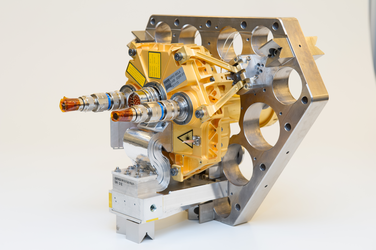World Leading Instrument Development for Understanding Atomic Oxygen

A TDE funded activity, led by the DLR Institute of Optical Sensor Systems (Germany), developed a frequency stabilised Quantum-cascade Laser (QCL) and Schottky diode mixer for a satellite-borne 4.7-THz heterodyne spectrometer. New, world leading, European technologies were developed to demonstrate the feasibility of an actively frequency stabilised QCL at 4.7 THz and provide improvement of the stabilisation loop with respect to passive stabilisation based on thermal and electrical bias control. This is essential for understanding the global distribution of atomic oxygen, and its critical impact on global climate change in the upper atmosphere, as well as the atomic oxygen induced corrosion of spacecraft in Low Earth Orbit.

Atomic oxygen is an important component of the Earth’s atmosphere. It is the most abundant species in the mesosphere-lower thermosphere (MLT) - a region of Earth’s atmosphere approximately 80 km to beyond 500 km in altitude – and is generated through the photolysis of molecular oxygen by ultraviolet radiation. Atomic oxygen is also an important factor to the energy budget and photochemistry of the MLT. Collisions with atomic oxygen and carbon dioxide leads to more efficient cooling and shrinking of the MLT, affecting global climate change as the concentration of carbon dioxide increases. The concentration of atomic oxygen is also affected by dynamical motions, vertical transport, tides, and winds. Accurate knowledge of the global distribution of atomic oxygen and its concentration profile, as well as diurnal and annual variations, is therefore essential for understanding the photochemistry, the energy budget and the dynamics of the MLT.
Contract 4000125911 closed in 2022, after successfully raising the instrument’s technology readiness level from two (application formulated) to four (functional verification). The activity was led by the DLR Institute of Optical Sensor Systems (Germany), in partnership with the Paul-Drude Institut für Festkörperelektronik (Germany), Omnisys (Sweden) and Chalmers University of Technology (Sweden).












